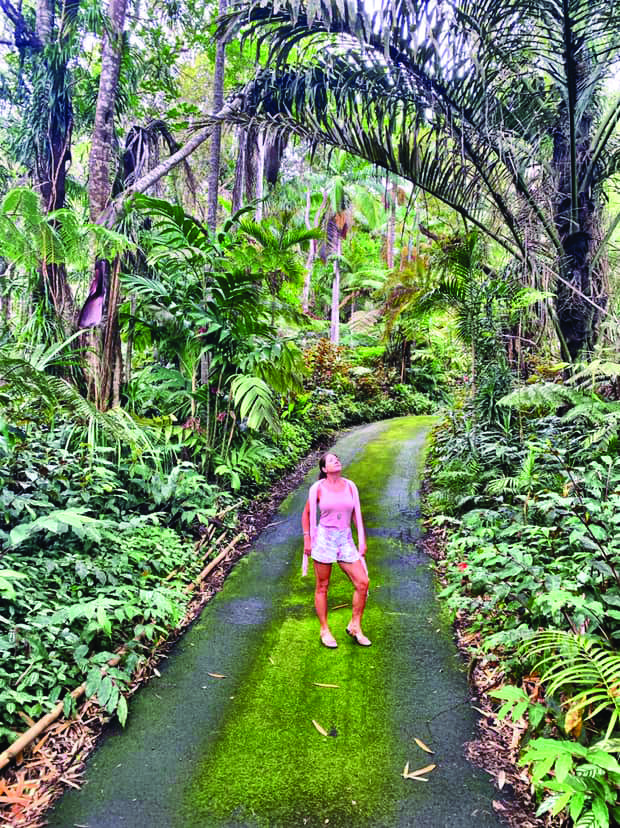The National Geographic on the Big Island of Hawaiʻi. Driving is the best way to see it so let us take you on one of the best tours of the Big Island while you sit back, relax, and let us do the driving.
Warm beaches, cool highlands, active lava flows, and lush jungles await.
You’ll encounter lava desert, jungle, farmland, active lava flows, warm beaches, cool highlands, and views of soaring mountains and plunging valleys. And everywhere, you’ll feel the aura of the mysterious Polynesians who landed here more than a thousand years ago and named the island Hawaiʻi.
Overview
“The Big Island has it all,” says Corky Bryan, a career paniolo, or Hawaiʻian cowboy, who’s now a vice president at the island’s 150,000-acre (60,702-hectare) Parker Ranch. He’s right. This island is larger than all the other Hawaiʻian Islands combined; it’s the only one still volcanically active; and it has rich evidence of native culture. The Big Island, where Kamehameha the Great established his kingdom, was the first Hawaiʻi. To many, it’s still the real Hawaiʻi.
Begin in Kailua-Kona
In Kailua-Kona, American missionaries started the first Christian church in Hawaiʻi in 1820. Today, the Mokuaikaua Church (75-5713 Alii Dr.; 1 808 329 0655; www.mokuaikaua.org), which was rebuilt in 1837 of crushed coral and lava rock, is still a quiet sanctuary. Step across the street to the two-story, palm-shaded 1838 Hulihee Palace (75-5718 Alii Dr.; 1 808 329 1877; http://www.huliheepalace.net/), now a museum. Check out the enormous koa wood chair specially built to accommodate Princess Ruth, who measured over six feet tall and weighed over 400 pounds (181 kilograms).
Ahuena Heiau
Nearby, along the shore, is the reconstructed Ahuena Heiau (75-5660 Palani Rd.; 1 808 327 0123; www.kulana.Hawaiʻiweb.org). Heiaus are ceremonial stone structures usually built on a platform (as in this case). Using Ahuena as his headquarters, Kamehameha conquered and unified the Hawaiʻian Islands in the early 19th century. The surrounding village remained the capital of all the Hawaiʻian Islands until 1821. “For some of us, it still is the capital,” says Kaleookalani Nakoa, a native Hawaiʻian and one of the official guardians of the heiau.
Kona Coffee Living History Farm
Continuing south along the scenic two-laner, you’re soon high above the ocean, fields of bushes and berries indicating that this is coffee country. For a taste of the plantation lifestyle established over the past century, pull into the Kona Coffee Living History Farm just before the village of Captain Cook (mile marker 110; 1 808 323 2006; www.konahistorical.org). You’ll learn not just about locally grown coffee but also sample the luscious fruits that abound in Hawaiʻi, such as Kona oranges, passion fruit, and guavas, among others.
Kealakekua Bay
A side road leads to Kealakekua Bay, from which you can see a monument marking the place where British explorer James Cook was stabbed to death by the natives in 1779. This happened just a year after he and his crew became the first Europeans to set foot on what he dubbed the “Sandwich Islands.”
Coffee Shack
Back on the main road, stop at the mountainside Coffee Shack (after mile marker 108; 1 808 328 9555; www.coffeeshack.com), built on a coffee plantation. Besides Kona coffee, lunch, and breakfast—try the eggs Benedict—the lanai, or porch, has views of 26 miles (41 kilometers) of coastline far below.
St. Benedict’s
In the same area, don’t miss St. Benedict’s, better known as the Painted Church (84-5140 Painted Church Rd., Captain Cook; 1 808 328 2227; www.thepaintedchurch.org/history.asp). To give his congregants the illusion of being in a European cathedral, its Belgian priest painted the interior with a simple trompe l’oeil technique in the early 1900s. Also nearby, look for the 180-acre (73-hectare) Puuhonua O Honaunau National Historical Park, preserving what’s left of an ancient Hawaiʻian royal residence, a sacred place of refuge, and a heiau. Among the original artifacts on the site are petroglyphs and a 16th-century wall.
Lava Fields and Forests
For the next 40 miles (64 kilometers), the road traverses, alternately, old lava fields and Eden-like forests with flowering multicolored bougainvillea and hibiscus along the side of the road. Also look for tropical trees like the wide-spreading monkeypod and ohia trees with feathery red blossoms.
Naalehu
At Naalehu, stop at the Punalu’u Bake Shop (95-3642 Hamalahoa Hwy.; 1 808 929 7343; www.bakeshopHawaiʻi.com), famed for Portuguese sweet bread and malasadas (doughnuts). Box up an assortment to eat later in the car.
Hawaiʻi Volcanoes National Park
Soon the Belt Road rises in altitude and lowers in temperature until reaching Hawaiʻi Volcanoes National Park (1 808 985 6000; www.nps.gov/havo). Stop at Kilauea Visitor Center to get maps and current advice on how to safely view active lava flows in the park. A good bet is a ranger-led hike.
Hilo
Consider overnighting on the rim of the park’s Kilauea Caldera at the Volcano House (Currently undergoing renovations; 1 Crater Rim Dr.; 1 808 967 7321; www.volcanohousehotel.com). Another lodging, in the town of Hilo, is the 1899 Shipman House (131 Kaiulani St.; 1 808 934 8002; www.hilo-Hawaiʻi.com), a Victorian mansion where author Jack London and his wife, Charmian, stayed during their 1907 visit.
Honomu
North from Hilo, take a turnoff to the old village of Honomu, whose funky false-front businesses include an antique bottle shop. Honomu exists mainly because it’s on the way to Akaka Falls State Park (1 808 974 6200; www.Hawaiʻistateparks.org/parks/Hawaiʻi/Index.cfm?park_id=2), known for its 442-foot (135-meter) falls and lush rain forest surroundings.
Honokaa
Leave the main highway again at Honokaa to reach the viewpoint overlooking the nearly deserted Waipio Valley, 850 feet (250 meter) below. It’s one of the premier panoramas in the state. Only four-wheel-drive vehicles are allowed to drive down the steep road to the valley floor and its black-sand beach.





